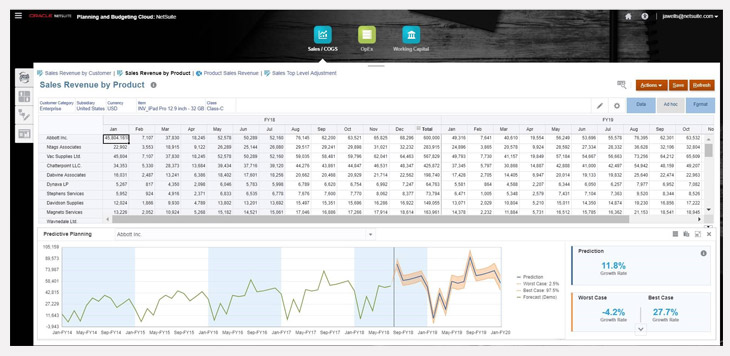
When making a major decision, would you go with your ‘gut’, or would you consult the facts and data first? Gartner research revealed that businesses in Asia-Pacific, though more mature than other regions, still make decisions with their ‘gut’, as 52% don’t rely on data to make transformational, accurate – and measurable – decisions.
By using the right data tools and platforms, businesses can spot reoccurring trends or anticipate peak periods, allowing them to adjust their operations to accommodate.
Ultimately, if businesses aren’t already peering into their data, they can bet that their competitors are – and the faster they sow seeds of a data culture today, the better they can ensure competency in the near future.
“The pace of business today means that planning can no longer be solely based on historical data or generic, one-size-fits-all templates and instead it needs to be a living and breathing process that is integrated into daily operations, designed for distinct industry use cases and constantly updated with real-time performance data and insights,” said Gary Wiessinger, SVP of Product Management, Oracle NetSuite.
How to implement a data-based approach
To start off, businesses should work out the business questions they want their data to answer. Doing so doesn’t just narrow the search for the right data – it also allows leaders to attach measurable goals and objectives to these questions, and subsequently track progress as the data comes in. This, in turn, sets a precedent for all decision-making.
Businesses should also keep in mind that the amount of data that’s needed varies with the problem’s complexity. For instance, less data is needed to resolve a single bottleneck in a supply chain, compared to what’s needed to optimise the entire chain itself. When starting out, businesses should attempt to tackle bite-sized questions first, before graduating onward to the bigger, more data-intensive questions.
Using ERP to gain insight
If people can’t access your data, they simply won’t use it. Those serious about enabling data-led decisions should, therefore, make frictionless data accessibility their top priority – and this is something that cloud-based business management platforms, such as ERP systems, can help you do.
Most platforms are intuitive to the average user, allowing employees to easily find and draw out the data they need and use them to substantiate their decisions. Furthermore, they – and the entire business – can see the effects of those decisions in real-time, thanks to ERP’s nature as a single source of truth, further boosting collaboration and accountability across the board.

In the long run, this data can also contribute toward more accurate predictions, as opposed to emotion-based ‘gut’ feel. Data’s rigorous certainty is inspiring everyone from e-commerce giants to small-medium businesses to weave it into their decision-making processes.
Most would turn to ERP platforms to output data snapshots across periods of time and present them visual charts or graphs that allow employees to identify recurring trends or spikes in demand.
This enables teams to plan ahead and greet busy periods with less stress and pressure – further reinforcing the usefulness of data to the business. However, implementing ERP is a new challenge in its own right, one best approached with a good solutions partner.
To find out how ERP can help you make data-based decisions get in touch below
[gravityform id=2 title=false description=false ajax=true tabindex=49]


